4 survey
The Jackson Heart Study: Annual Follow-up with Third Party Respondents (NHLBI)
Attach 15-Hospital Abstraction (HRA) Form
The Jackson Heart Study: Annual Follow-up with Third Party Respondents
OMB: 0925-0491
OMB # 0925-0491
Expiration Date.XX/XXXX
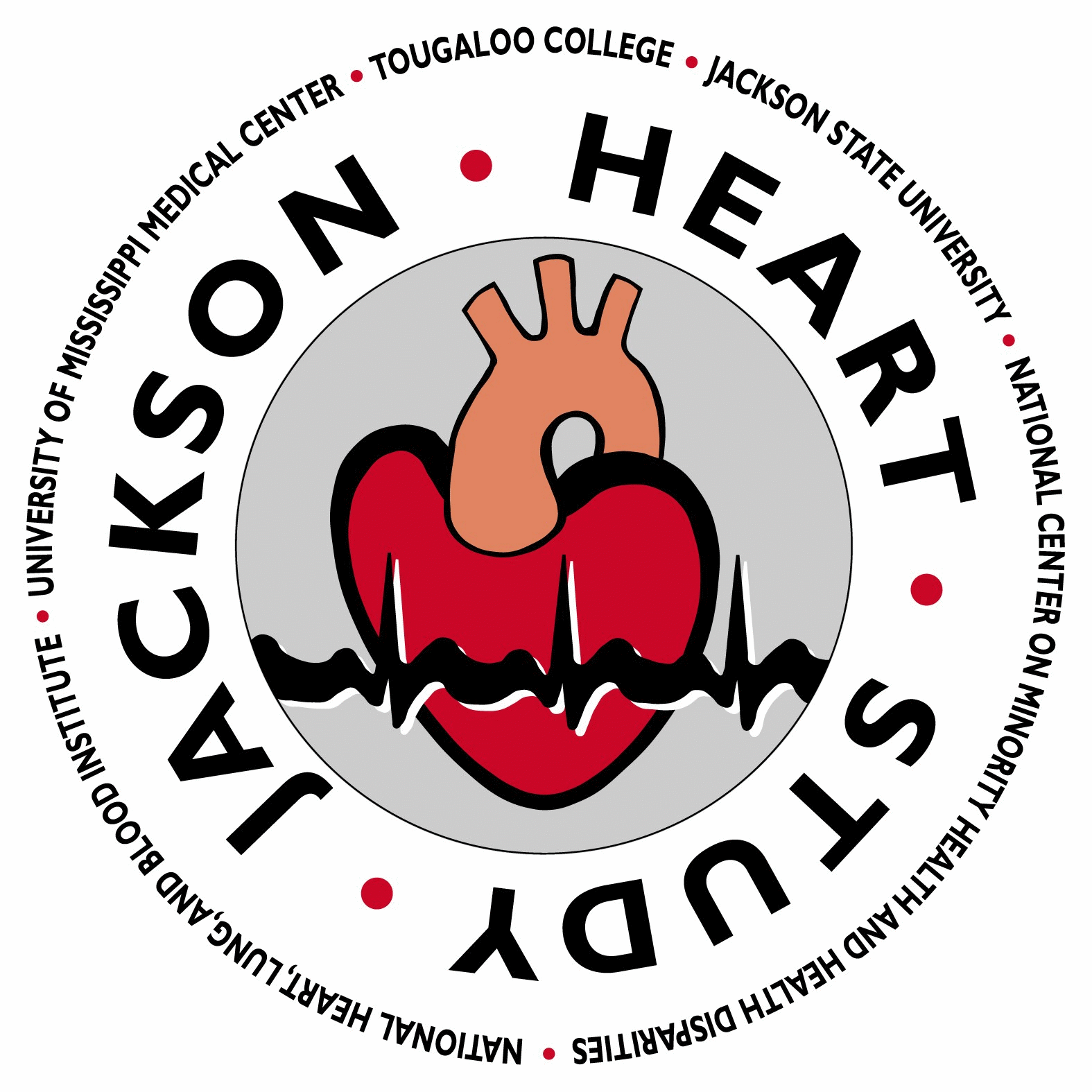 HOSPITAL
ABSTRACTION FORM
HOSPITAL
ABSTRACTION FORM


ID NUMBER: FORM CODE: H R A VERSION: F DATE: 02/06/2007


LAST NAME: INITIALS:
INSTRUCTIONS: The Hospital Record Abstraction Form is completed for each eligible hospitalized event as determined by the Surveillance Event Eligibility Form, and for all eligible Cohort hospitalizations as determined by the Cohort Eligibility Form. Event ID, Name (or Soundex code) must be entered above. Refer to this form's Q by Q instructions for information on entering numerical responses. For multiple choice and "yes/no" questions, record the letter corresponding to the most appropriate response. |
-

0.a. Hospital code number:
0.b. Medical Record Number:

0.c. Date of discharge (for nonfatal case) or death:

Month Day Year
17. What was the disposition of the patient on discharge?
 Deceased
D
Deceased
D Discharged
alive A
Discharged
alive A
18. Was an autopsy performed? .............. Yes Y
No N
19.a. Was the patient either dead on arrival or did he/she
Go to Item 19e.
19.b. First recorded Systolic BP: mmHg
If zero or not recorded, and patient died within 24 hours, record 000 and go to item 19e. If zero or not recorded and patient lived at least 24 hours, enter 001.
|
19.c. First recorded Diastolic BP: mmHg
d. First recorded Pulse Rate: bpm
If pulse rate is greater than 0, go to Item 21d, If 0 or not recorded, and patient lived at least 24 hours, enter 001 and go to Item 21d. If 0 or not recorded and patient died within 24 hours, enter 000 and continue with Item 19e.
e. Was there (an) acute episode(s) of pain or discomfort anywhere in the chest, left arm or shoulder or jaw either just before death or within 72 hours of death? ....................... Yes Y
No N
Unknown U
|
19.f. Is there a history of myocardial infarction prior to onset of this event? ................…….…….... Yes Y
Go to Item 19h. Unknown U
g. Did a myocardial infarction occur within four weeks of this event? ..................... Yes Y
No N
Unknown U
h. Is there any history of angina pectoris or coronary insufficiency? .................. Yes Y
No N
Unknown U
|
19.i. Is there any history of any other chronic ischemic heart disease? .................. Yes Y
No N
Unknown U
Skip to Item 97, and treat as as an out-of-hospital death.
20. Answer the following:
a. Do the Discharge Diagnoses
Go to Item 21a No N
b. *Item deleted*
c. *Item deleted*
d. Is there mention of acute
Go to Item 21a No N
|
20.e. The following apply to this chart:
1. Is this person a cohort participant? ..........…………... Yes Y
No N
3. Is any Cardiac Enzyme
Go to Item 21a. No N
4. Was there a transfer (in or out)? ..................……………... Yes Y
No N
If all of Items 20.e.2 - 20.e.4 are answered No, go to Item 97.
|
21. First recorded blood pressure and pulse rate (not during CPR).
a. Systolic BP: ................ mmHg
b. Diastolic BP: ............... mmHg
c. Pulse Rate: ................. bpm
d. Smoking Status: ............Current smoker C
Past smoker P
Smoker NOS S
Never smoker N
Unknown U |
22. Has the Discharge Summary been transcribed or attached (include symptom onset, timing, hospital course, etc.)?
ID Label Yes (Y)* or No (N) [If Yes, specify on notelog]
|
23.a. Did acute cardiac symptoms begin prior to arrival at this hospital?
Yes .................……………..... Y
─No acute cardiac symptoms …. A
─Unknown .................…………. U
Go to Item 24a.
|
23.b. Estimated time from onset of acute cardiac symptoms to arrival at this hospital.
<1 hour ...............……….. A
>1 hour and <2 hours ...…. B
>2 hours and <4 hours ...… C
>4 hours and <6 hours ...…. D
>6 hours and <12 hours ..… E
>12 hours and <24 hours ..... F
>1 day and <3 days .....…... G
>3 days .................……….. H
Go to Item 24b.
|
24.a. What was the primary diagnosis or reason for admission to this hospital?
Elective cardiac catheterization .........………. A
Elective coronary bypass surgery ..........………. B
Other non-acute CHD evaluation ..........…….. C
Cancer ...............……..……... D
Diabetes mellitus .........……. E
Stroke ..................………….. F
Chronic obstructive pulmonary disease ........…… G
Peripheral vascular disease …. H
Gallbladder disease .....…..…. I
Other .....................…………. O
|
24.b. Was there mention of an acute CHD event with onset after arrival at this hospital? ................... Yes Y
c. Date of in-hospital CHD event:
Month Day Year
[NOTE: If patient had both CHD event present on admission (Item 23=Y) and after admission (Item 24b=Y), you must decide which event is more important (see Instructions). Answer subsequent questions for the more important event.]
|
25.a. Was there an acute episode(s) of pain or discomfort anywhere in the chest, left arm or shoulder or jaw, either within 72 hours prior to arrival to this hospital, or in conjunction with the in-hospital CHD event defined in Item 24b? ...……......... Yes Y
Go to Item 26.a. Unknown U
b. Date of onset of pain:
Month Day Year
|
25.c. Did this pain or discomfort specifically involve the chest? .............. Yes Y
No N
Unknown U
d. Was the discomfort or pain diagnosed as having a non-cardiac origin? ............. Yes Y
Go to Item 25f. Unknown U
e. If Yes, specify:
_______________________________________________
f. Did the patient die? ......…………...... Yes Y
|
25.g. Approximately how long was it from the onset of this event to death?
<1 hour ............……….. A
>1 hour and <6 hours …. B
>6 hours and <24 hours … C
24 hrs or more ...…….…. D
Unknown ...........…….… U
26.a. Was coronary reperfusion (coronary angioplasty, coronary atherectomy, bypass, intravenous or intracoronary thrombolysis) attempted in the first 24 hours after onset of this event? ..…….... Yes Y
Go to Item 27.
|
26.b. Approximately how long was it between event onset and attempt at reperfusion?
< 1 hour ...........……..... A
> 1 hour and <2 hours ... B
>2 hours and <4 hours ... C
>4 hours and <6 hours ... D
>6 hours and <8 hours ... E
>8 hours ....……............ F
Unknown ......……......... U
27. Was the patient ever in a CCU/ICU or telemetry bed during this hospitalization? ......Yes Y
No N
Unknown U |
28. Were any of the following mentioned as being present during this hospital stay?
a. Shock or cardiogenic shock (pump failure) ..................……….. Yes Y
1. Did shock occur within the first 24 hours after onset of this event? ........ Yes Y
No N
Unknown U
b. Congestive heart failure or pulmonary edema ..........…....... Yes Y
1. Did CHF or pulmonary edema occur within the first 24 hours after onset of this event? ...............….... Yes Y
No N
Unknown U
c. S3 Gallop (third heart sound) ....... Yes Y
No N
|
28.d. Rales (not just basilar) ............ Yes Y
No N
e. Ventricular fibrillation or cardiac arrest or asystole ......... Yes Y
1. Did ventricular fibrillation or cardiac arrest occur within the first 24 hours after onset of this event? ... Yes Y
No N
Unknown U
f. Pulmonary embolus ................... Yes Y
No N
g. Stroke ..........................……….. Yes Y
No N
h. Pneumonia ........................……. Yes Y
No N |
29. Were the following special procedures or operations performed during this hospital stay?
Yes No
a. Cardiac catheterization Y N
b. Coronary angiography Y N
c. Coronary angioplasty Y N
|
29.c.1. Approximately how long after the onset of this event was the performance of the coronary angioplasty?
Before onset .....……...... A < 1 hour ............……...... B > 1 hour and <2 hours .... C >2 hours and <4 hours .... D >4 hours and <6 hours .... E >6 hours and <8 hours .... F >8 hours and <24 hours ... G >24 hours ............…….... H Unknown ...........……..... U |
29.c.2 Coronary atherectomy .........…...Yes Y
Go to Item 29.d.───────── No N
c.3. Approximately how long after the onset of this event was the performance of the coronary atherectomy?
Before onset .........……..... A
< 1 hour ..............………… B
> 1 hour and <2 hours ..…. C
>2 hours and <4 hours ..…. D
>4 hours and <6 hours ..…. E
>6 hours and <8 hours ..…. F
>8 hours and <24 hours .…. G
>24 hours ............…….…. H
Unknown .............…...….. U
|
Yes No 29.d. Swan-Ganz catheterization Y N
e. Echocardiography Y N
f. Coronary bypass surgery Y N
f.1. Approximately how long after the onset of this event was the performance of the coronary bypass surgery?
Before onset ....……........ A
< 1 hour ..........………..... B
> 1 hour and <2 hours .... C
>2 hours and <4 hours .... D
>4 hours and <6 hours .... E
>6 hours and <8 hours .... F
>8 hours and <24 hours.. ... G
>24 hours ...........……..... H
Unknown ...........……..... U
|
29.g. Intracoronary streptokinase, urokinase, anistreplase, APSAC, or TPA reperfusion ......... Yes Y
No N
h. Intravenous streptokinase, urokinase, anistreplase APSAC, or TPA reperfusion ......... Yes Y
No N
If 29g and 29h were answered "No", Go to Item 29i.
|
29.h.1. Approximately how long after the onset of this event was the performance of the intracoronary or intravenous reperfusion?
Before onset ........……..... A < 1 hour ...............………. B > 1 hour and <2 hours ...... C >2 hours and <4 hours ..... D >4 hours and <6 hours ..... E >6 hours and <8 hours ..... F >8 hours and <24 hours .... G >24 hours .............…….... H Unknown .............…….... U
|
Yes No
29.i. Aortic balloon pump Y N
j. Radionucleide scan of heart Y N
k. If yes, specify type:
_____________________________________________
l. *Item deleted*
m. MRI scan of heart Y N
n. Exercise stress test Y N
|
Yes No
29.o. Holter monitoring Y N
p. Pacemaker (temporary, wires) Y N
1. Coronary stent Y N
Go to Item 29p2.
a. Approximately how long after the onset of this event was the placement of the coronary stent?
Before onset ..........…….. A < 1 hour .............……….. B > 1 hour and <2 hours ..... C >2 hours and <4 hours ..... D >4 hours and <6 hours ..... E >6 hours and <8 hours ..... F >8 hours and <24 hours .... G >24 hours ..............…….... H Unknown .................……. U |
Yes No
29.p.2. Implanted defibrillator Y N
a. Approximately how long after the onset of this event was the defibrillator implanted?
Before onset .........…….... A < 1 hour .............……….... B > 1 hour and <2 hours ..…. C >2 hours and <4 hours .….. D >4 hours and <6 hours .…. E >6 hours and <8 hours .…. F >8 hours and <24 hours ... G >24 hours ..........………... H Unknown ...........……...... U |
Yes No 29.p.2. c. Coronary CT Y N
d. MRI Stress Test Y N
29.q. Other (specify):
1._________________________________________________
_________________________________________________
2._________________________________________________
_________________________________________________
|
30a.. Was closed chest massage (CPR) and/or cardioversion attempted within 24 hours prior to arrival at this hospital or anytime during this hospitalization? ..... Yes Y
Go to Item 31.a.
b. Date of first onset of attempted CPR and/or cardioversion:
Month Day Year
|
30.c. Where was first CPR and/or cardioversion started?
(Circle one)
Private residence ..….. R Work ...............……... W Public place .......……. P Emergency vehicle .…. V Emergency room ......…E Hospital ...........……… H Other ..............………. O Not recorded .......…… U
|
31. Were any of the following drugs given during this hospitalization or at discharge?
Yes No
a. Nitrates Y N
b. Calcium channel blockers Y N
c. Beta-blockers Y N
d. Digitalis Y N
e. Lidocaine (xylocaine) I.V. or I.M. only Y N
f. Coumadin (Warfarin, Panwarfin, Dicumarol) Y N
|
Yes No
g. Aspirin - on regular basis (not PRN) Y N
h. ACE or Angiotensin II inhibitors Y N
i. Intravenous heparin infusion Y N
j. Antiplatelet agents (non-aspirin) Y N
k. Glucose, insulin, potassium infusion (GIK) Y N
l. Lipid lowering medications (Statins, Niacin, Other) Y N
|
32. Is there a history of myocardial infarction prior to the onset of this event? .................………….. Yes Y
No N
Unknown U
[If U, also review previous discharge diagnoses.]
33. Is there any history of angina pectoris or coronary insufficiency? ..................……….. Yes Y
No N
Unknown U
If Item 32 or Item 33 is answered "Yes", Go to Item 35.
34.a. Is there a history of any other chronic ischemic heart disease? ..... Yes Y
Go to Item 35.
b. Specify: _______________________________________
|
35. Is there a history of valvular disease or cardiomyopathy? ..........…. Yes Y
No N
36. Is there a history of coronary bypass surgery prior to this event? .… Yes Y
No N
37. Is there a history of coronary angioplasty prior to this event? ...... Yes Y
No N |
38.a. Is there a history of hypertension (high blood pressure) prior to this event? ................…………. Yes Y
No N
Unknown U b. Does this patient have diabetes (high blood sugar), either history or diagnosed this hospitalization?..............……… Yes Y
No N
Unknown U
39. Is there a history of stroke prior to this event? ..... Yes Y
Go to Item 41. Unknown U
|
40. Did a stroke occur within 4 weeks prior to this event? ........ Yes Y
No N
Unknown U 41. Were any cardiac enzymes reported within days 1-4 after arrival at the hospital or after in-hospital CHD event? ....... Yes Y
Go to Item 43cc.
|
42.a. Is there mention of the patient having either trauma, a surgical procedure, or rhabdomyolysis, within one week prior to measurement of enzymes? .... Yes Y
Go to Item 42d.
b. Indicate type of procedure or trauma: Yes No
1. Cardiac procedure………………… Y N 2. CPR or cardioversion…………….. Y N 3. Other cardiac trauma……………… Y N
4. Specify:____________________ 5. Rhabdomyolysis…………………... Y N 6. Intramuscular injection……………. Y N 7. Non-cardiac procedure…………..... Y N
8. Specify:____________________ 9. Non-cardiac trauma………………... Y N
|
42.c. Enter the item number from the biomarkers section of this form corresponding to the first biomarker measurement
procedure or rhabdomyolysis:
d. Is there any evidence of hemolytic disease during the hospitalization? ..............…………. Yes Y
No N |
B. BIOMARKERS 43. LABORATORY STANDARDS Upper Limit Special** Range Set 1 of Normal Units
.
.
.
.
.
Serum Creatinine: dd. . . mg/dl
Pro- BNP: ee. . pg/ml
Upper Limit Special** Range Set 2 of Normal Units
Total CK (CPK) k.
CK-MB (hrt frac) l. m.
Total LDH n.
LDH1 o. p.
LDH2 q. r.
LDH1/LDH2 s. t.
Troponin T aa. bb.
**Special Units: CK-MB, Troponin I, Troponin T LDH1/LDH2 1 = (Negative/Positive) or (Absent/Present) or (Normal/Abnormal) 5 = % 2 = (Negative/Weak Positive/Positive) or (Absent/Trace/Present) 6 = Proportion (decimal) or (Normal/High Normal/Abnormal) 7 = (Negative/Positive) or (LDH1 < LDH2 / LDH1 > LDH2) CK-MB, LDH1, LDH2 3 = Expressed as % of total enzyme 4 = Expressed as proportion (decimal units) of total enzyme
|
BIOMARKERS: DAY ONE
44.a. Date
Month Day Year Go To Item 48.a.
Record values in chronologic order for the three highest reports for each enzyme on Day One of arrival or in-hospital CHD event. (LDH1 and LDH2 must be on same specimen.) Value (See Footnote next page)* Range Set
45. Total CK (CPK) a. b.
CK-MB (hrt frac) c. . d.
Total LDH e. f.
LDH1 g. . h.
LDH2 i. . j.
LDH1/LDH2 k. . l.
Troponin I m. . n.
Troponin T o. . p.
CK-MB (hrt frac) c. . d.
Total LDH e. f.
LDH1 g. . h.
LDH2 i. . j.
LDH1/LDH2 k. l.
Troponin I m. . n.
Troponin T o. . p.
47. Total CK (CPK) a. b.
CK-MB (hrt frac) c. . d.
Total LDH e. f.
LDH1 g. . h.
LDH2 i. . j.
LDH1/LDH2 k. . l.
Troponin I m. . n.
Troponin T o. . p.
|
BIOMARKERS: DAY TWO
48.a. Date
Go to Item 51.a.
Record values in chronologic order for the two highest reports for each enzyme on Day Two following arrival or in-hospital CHD event. (LDH1 and LDH2 must be on same specimen.)
Value* Range Set
49. Total CK (CPK) a. b.
CK-MB (hrt frac) c. . d.
Total LDH e. f.
LDH1 g. . h.
LDH2 i. . j.
LDH1/LDH2 k. . l.
Troponin I m. . n.
Troponin T o. . p. Value* Range Set
CK-MB (hrt frac) c. . d.
Total LDH e. f.
LDH1 g. . h.
LDH2 i. . j.
LDH1/LDH2 k. . l.
Troponin I m. . n.
Troponin T o. . p. *Special Values: CK-MB, Troponin I, Troponin T A = Negative or absent or normal B = Weak positive or weak present or trace or high-normal or small C = Present or positive or abnormal or medium or large LDH1/LDH2 D = LDH1/LDH2 reported only as > upper limit or positive or LDH1 > LDH2 (or "flipped") E = LDH1/LDH2 reported only as < upper limit or negative or LDH1 < LDH2 (or "non-flipped) |
B
51.a. Date
Go to Item 54.a.
Record values in chronologic order for the two highest reports for each enzyme on Day Three following arrival or in-hospital CHD event. (LDH1 and LDH2 must be on same specimen.)
Value* Range Set
LDH1/LDH2 k. . . l.
Troponin I m. . . n.
Troponin T o. . . p.
Value* Range Set
Troponin T o. . . p.
*Special Values: CK-MB, Troponin I, Troponin T A = Negative or absent or normal B = Weak positive or weak present or trace or high-normal or small C = Present or positive or abnormal or medium or large LDH1/LDH2 D = LDH1/LDH2 reported only as > upper limit or positive or LDH1 > LDH2 (or "flipped") E = LDH1/LDH2 reported only as < upper limit or negative or LDH1 < LDH2 (or "non-flipped) |
B
54.a. Date
Go to Item 56aa. Record values in chronologic order for the two highest reports for each enzyme on Day Four following arrival or in-hospital CHD event. (LDH1 and LDH2 must be on same specimen.) Value* Range Set
CK-MB (hrt frac) c. . d.
Total LDH e. f.
LDH1 g. . h.
LDH2 i. . j.
LDH1/LDH2 k. . . l.
Troponin I m. . . n.
Troponin T o. . . p.
Value* Range Set
CK-MB (hrt frac) c. . d.
Total LDH e. f.
LDH1 g. . h.
LDH2 i. . j.
LDH1/LDH2 k. . . l.
Troponin I m. . . n.
Troponin T o. . . p.
*Special Values: CK-MB, Troponin I, Troponin T A = Negative or absent or normal B = Weak positive or weak present or trace or high-normal or small C = Present or positive or abnormal or medium or large
LDH1/LDH2 D = LDH1/LDH2 reported only as > upper limit or positive or LDH1 > LDH2 (or "flipped") E = LDH1/LDH2 reported only as < upper limit or negative or LDH1 < LDH2 (or "non-flipped) |
56.aa Was BNP measured? Yes No Y N
56.ab. Record the value of the first, last, and highest measurements of BNP (pg/ml):
values (if more than two):
56.af Was pro- BNP measured? Yes No Y N
56.ag. Record the value of the first, last, and highest measurements of pro-BNP (pg/ml):
1. First: . . 2. date: (mm/dd/yyyy) 3. Last (if more than one): . 4. date: (mm/dd/yyyy)
values (if more than two):
|
56.ac. Was serum creatinine measured? Yes No Y N.
56.ad. Record the value of the first, second, and last measurements of serum creatinine (mg/dl): 1: First: . 2. date: (mm/dd/yyyy)
3: Second: . 4. date: (mm/dd/yyyy)
5
56.ae. Is this patient currently on kidney dialysis (anytime in the last four weeks)? YES Y NO N
|
C. ECG CODING
57. Were any 12 lead ECGs taken during this admission? ............... Yes Y
Go to Item 97.
58. Are any of the ECGs codable: .......... Yes Y
Go to Item 97.
FIRST CODABLE ECG AFTER ARRIVAL AT HOSPITAL (ECGF)
59. Date of ECGF: Month Day Year [Check calibration mark]
a. Time of ECGF: H H M M
70. Are there other codable ECGs? ......... Yes Y
Go to Item 94.
|
LAST CODABLE ECG ON THIS ADMISSION (ECGL)
71. Date of ECGL: Month Day Year
a. Time of ECGL: H H M M
82. Are there other codable ECGs taken on or after day 3 after admission, or on or after day 3 following an in-hospital event? ................ Yes Y
Go to Item 94.
Find the last codable ECG on day 3 after admission, or on day 3 after an in-hospital event (ECGT). [If day 3 ECG is not available, use first available ECG thereafter.]
THIRD DAY ECG (ECGT)
83. Date of ECGT: Month Day Year
a. Time of ECGT: H H M M
|
94. Were ECGs sent to Minnesota ECG Reading Center? ..... Yes Y
Yes No
a. ECGF sent? .............. Y N
b. ECGL sent? .............. Y N
c. ECGT sent? .............. Y N |
D. ADMINISTRATIVE INFORMATION
97. Abstractor number:
completed: Month Day Year
|
| File Type | application/msword |
| File Title | ARIC HOSPITAL ABSTRACTION FORM |
| Author | CSCC |
| Last Modified By | pandeym |
| File Modified | 2009-12-15 |
| File Created | 2009-11-12 |
© 2025 OMB.report | Privacy Policy
 die in the emergency
room? …….... Yes Y
die in the emergency
room? …….... Yes Y No N
No N




 No
N
No
N
 include any 410 or
411 codes? ... Yes Y
include any 410 or
411 codes? ... Yes Y
 MI in the discharge
summary? …. Yes Y
MI in the discharge
summary? …. Yes Y

 2. Is there more than
one ECG? …. Yes Y
2. Is there more than
one ECG? …. Yes Y Go
to Item 21a. No N
Go
to Item 21a. No N above the normal
limit? .....…… Yes Y
above the normal
limit? .....…… Yes Y
 ─No,
after arrival .......………..…. N
─No,
after arrival .......………..…. N
 Not
recorded .........…….…. U
Not
recorded .........…….…. U
 Go to Item
25.a. No N
Go to Item
25.a. No N No
N
No
N

 No
N
No
N Go to Item 28b.
No N
Go to Item 28b.
No N
 Go to Item 28c.
No N
Go to Item 28c.
No N
 Go to Item 28f.
No N
Go to Item 28f.
No N


 Go to Item 29c2.
Go to Item 29c2.  Go to
Item 29g.
Go to
Item 29g. 


 Go to Item
29m.
Go to Item
29m.




 No N
No N
 No N
No N
 No
N
No
N
 No N
No N
 No N
No N
 Total CK (CPK)
a.
Total CK (CPK)
a.

 CK-MB (hrt
frac) b. .
c.
CK-MB (hrt
frac) b. .
c.
 Total LDH
d.
Total LDH
d.
 LDH1/LDH2
i. .
j.
LDH1/LDH2
i. .
j.





 and Q43dd. Then skip
to Q56aa.
and Q43dd. Then skip
to Q56aa.
 Troponin I
y.
z.
Troponin I
y.
z.

 No
N
No
N



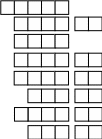 46.
Total CK (CPK) a.
b.
46.
Total CK (CPK) a.
b.


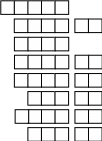

 Month
Day Year
No N
Month
Day Year
No N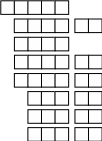

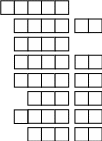 50.
Total CK (CPK) a.
b.
50.
Total CK (CPK) a.
b. 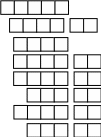 52.
Total CK (CPK) a.
b.
52.
Total CK (CPK) a.
b.
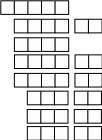 53.
Total CK (CPK) a.
b.
53.
Total CK (CPK) a.
b.
 IOMARKERS:
DAY FOUR
IOMARKERS:
DAY FOUR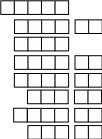 55.
Total CK (CPK) a.
b.
55.
Total CK (CPK) a.
b. 


 Go to Q56af.
Go to Q56af.
 1. First:
. .
2. date:
(mm/dd/yyyy)
1. First:
. .
2. date:
(mm/dd/yyyy) 3. Last (if
more than one): . .
4. date:
(mm/dd/yyyy)
3. Last (if
more than one): . .
4. date:
(mm/dd/yyyy)

 No
N
No
N No N
No N
 No N
No N
 No
N
No
N
 Go
to Item 97. No N
Go
to Item 97. No N